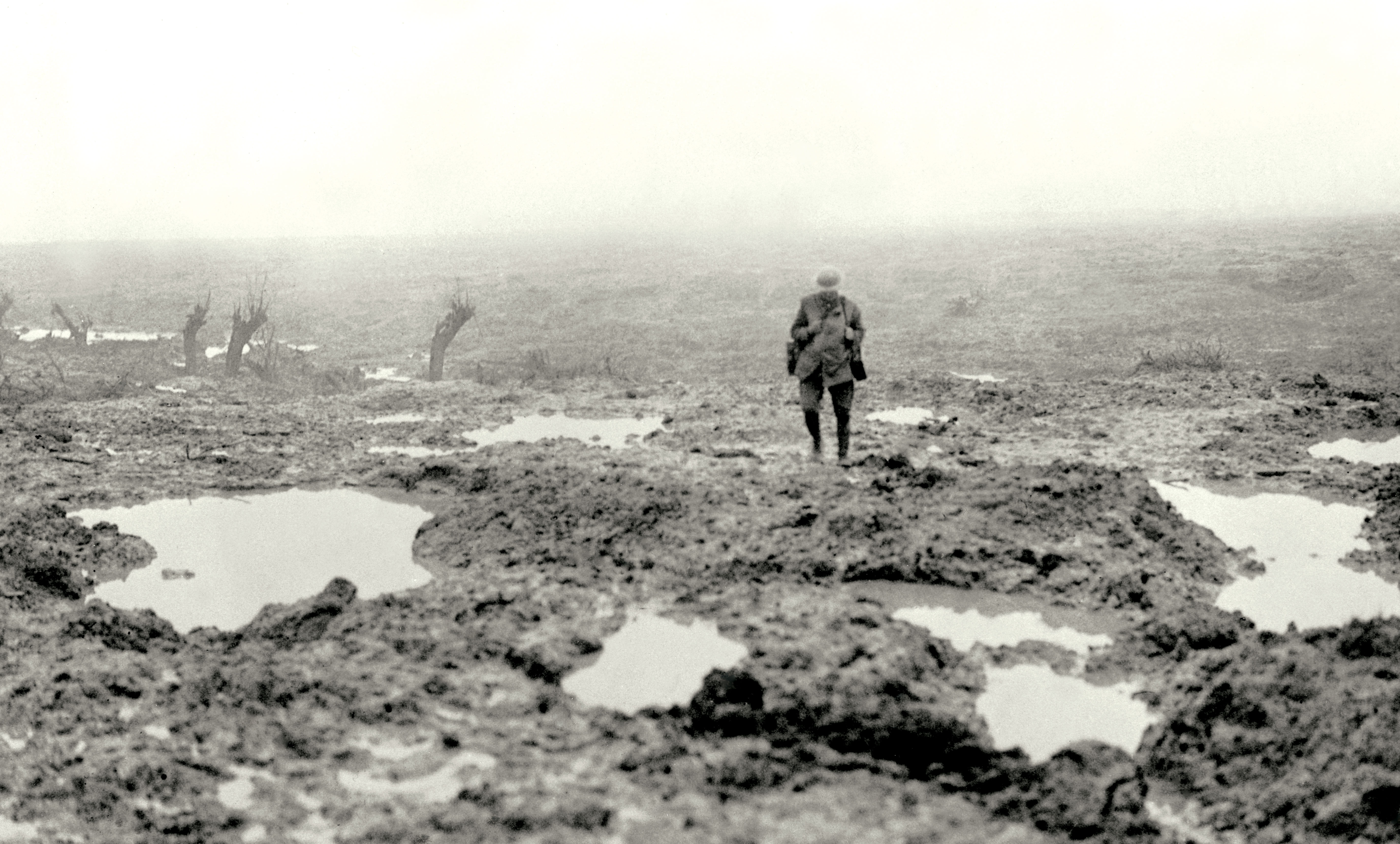
A soldier crosses the muddy and shell-torn battlefield at Passchendaele in November 1917. [LAC/PA004564]
The Canadian Corps, which had fought in a dozen battles after its success capturing Vimy Ridge in April, was ordered in October 1917 to help capture the ridge at Passchendaele.
The objections of their commander, Lieutenant-General Sir Arthur Currie, were ignored. Months of fighting and unrelenting rain had turned the area into a muddy bog in which men and horses drowned. The stench of unburied bodies seemed to underscore the futility of the task. He estimated 16,000 Canadian lives would be lost in the attempt; the total was 15,654.
Currie had new roads built, extended the light railways that delivered supplies, trained the artillery and engineers, and launched the first attack Oct. 26.

Major George Pearkes during the First World War. [LAC/PA-002364]
They held out for more than a day, preventing an attack on the vulnerable left flank of the main attacking force, before they were finally relieved. On Nov. 6, the Canadians succeeded in taking the village.
”It has been said that the Battle of Passchendaele could not have been won if it were not for the heroic actions of Major George Pearkes of the 5th Canadian Mounted Rifles,” says the Veterans Affairs Canada website.
He was awarded the Victoria Cross. “He showed throughout a supreme contempt of danger and wonderful powers of control and leading,” says the citation.
After the war, Pearkes continued his career in the Army, rising to the rank of major-general. He served again in the Second World War, went into politics in 1945, and served as minister of national defence from 1957 to 1960. He was later appointed lieutenant-governor of British Columbia. Pearkes died in 1984, aged 96.
Advertisement





















